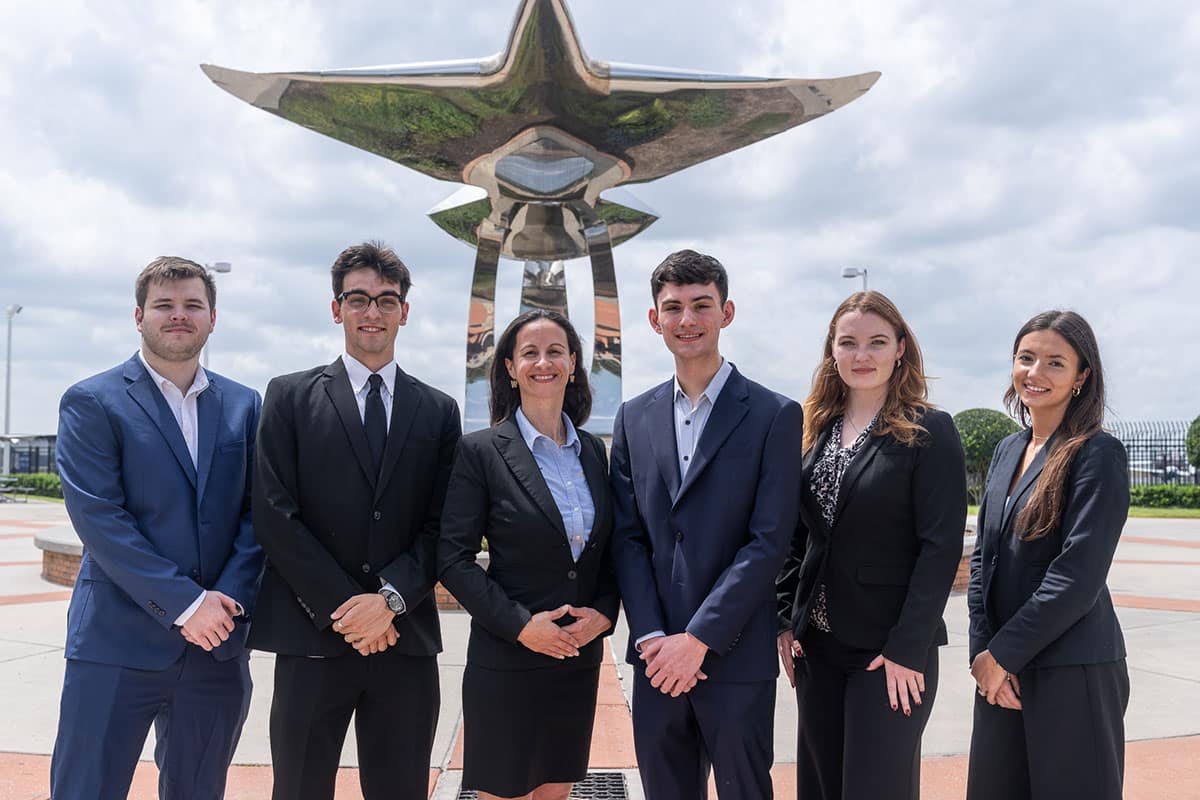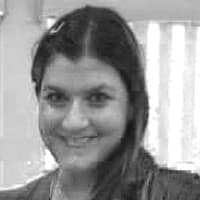Drone System for Managing the Herd Takes Eagle Team to NASA’s Blue Skies Competition Finals

An Embry-Riddle Aeronautical University team is one of eight finalists pitching their projects this week for NASA’s Blue Skies Competition, which challenged students to develop innovative aviation-related systems to support agriculture.
The four-member Embry-Riddle team is presenting its Sky Shepherd: Autonomous Aerial Cattle Monitoring project to a panel of NASA and industry experts at the May 20-21 final forum near NASA’s Armstrong Flight Research Center in Palmdale, California. As a finalist, the Embry-Riddle team received a $9,000 stipend from NASA to attend the final forum.
“It feels incredibly rewarding to be the first Embry-Riddle team to make it into the finals of the Blue Skies AgAir competition,” said Claudia Ehringer Lucas, the team’s faculty mentor and an associate professor in the College of Engineering on the Daytona Beach Campus. “It’s a testament to the hard work, dedication and creativity of the students.”
This year’s Gateways to Blue Skies competition, sponsored by NASA’s Aeronautics Research Mission Directorate’s University Innovation Project and managed by the National Institute of Aerospace (NIA), asked for proposals and videos conceptualizing aviation-related systems that can be applied to agriculture by the year 2035 or sooner, with the goal ofenhancing production, efficiency, sustainability and resilience to extreme weather.
“We are excited to see how each finalist team fleshes out their original concept in their final papers, infographics and presentations,” said Steven Holz, NASA Aeronautics University Innovation assistant project manager and co-chair of the Gateways to Blue Skies judging panel.
The eight final teams are vying for the competition’s top prize: NASA internships for all team members at one of the agency’s aeronautics centers during the 2025-2026 academic year.
“Being able to represent the school at a NASA-sponsored conference is amazing,” said Tyler McConnell, a sophomore Aerospace Engineering student and team leader who is from Carlisle, Pennsylvania. “I’m excited to be able to show off all our hard work from the past year.”
The Embry-Riddle team’s Sky Shepherd is a fixed-wing uncrewed aerial vehicle (UAV) design concept that aims to improve large-scale livestock management. Specifically engineered to minimize noise that can irritate cattle, it enhances herd safety and animal welfare by monitoring cattle location and health, allowing for quicker veterinary response times and reduced labor.
“Our autonomous UAV concept implements low-stress cattle management techniques to large ranches that are not currently able to implement aeronautical solutions in a practical way,” said Gus Gatti, a team leader who graduated in May with his bachelor’s degree in Aerospace Engineering. “Our solution introduces position and health tracking to vulnerable populations that would not have had fast response times to veterinary care under current methods of cattle tracking.”
From Class to Real-World Experience
Ehringer Lucas first taught the team’s four students in her Introduction to Engineering course. She said their involvement in the NASA competition has helped strengthen the engineering concepts they are learning in the classroom, while providing them with hands-on, real-world experience in systems engineering, project management, technical communication and collaborative problem-solving. The team has been working on the project since last September.
“It’s been incredibly rewarding to see how far the four of them have come,” said Ehringer Lucas, who has previous experience as an aerospace engineer for both the Department of Defense and NASA. “Being involved in this project has had a transformative impact on the students.”
Gatti, who is starting his master’s degree in Aerospace Engineering at Embry-Riddle in the fall, said working on the project also helped him learn new concepts, such as aeroacoustics and experimental battery technology.
“This was an awesome way to learn more about current areas of innovation in the aerospace industry and get perspective toward future areas of research to get involved in,” said Gatti, who is from Winchester, Massachusetts. “Having familiarity with innovations in the industry will help give myself and my team members a head start when we begin jobs in the future.”

 Melanie Stawicki Azam
Melanie Stawicki Azam